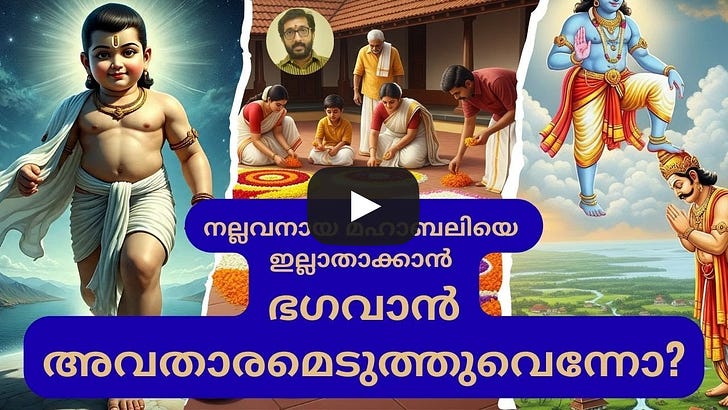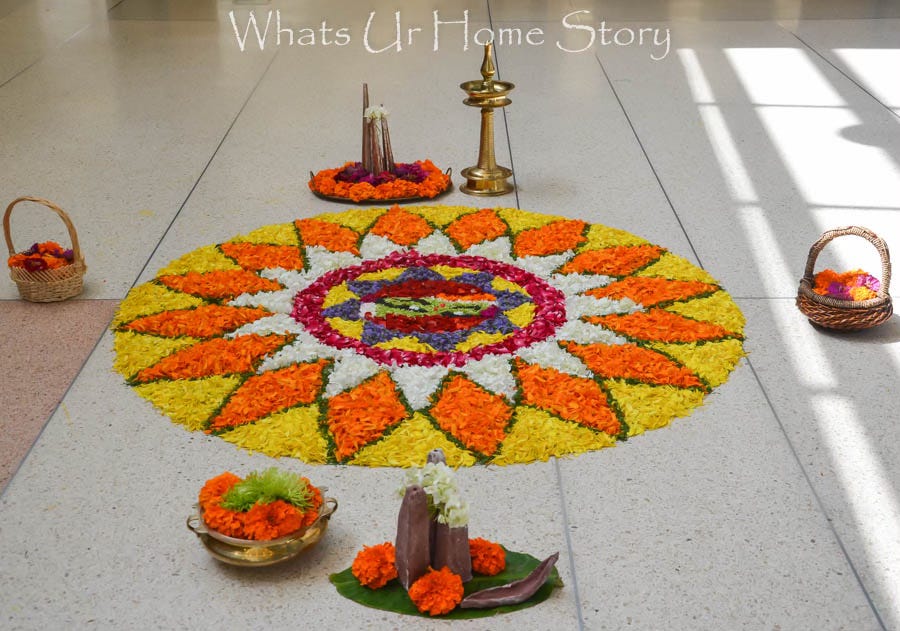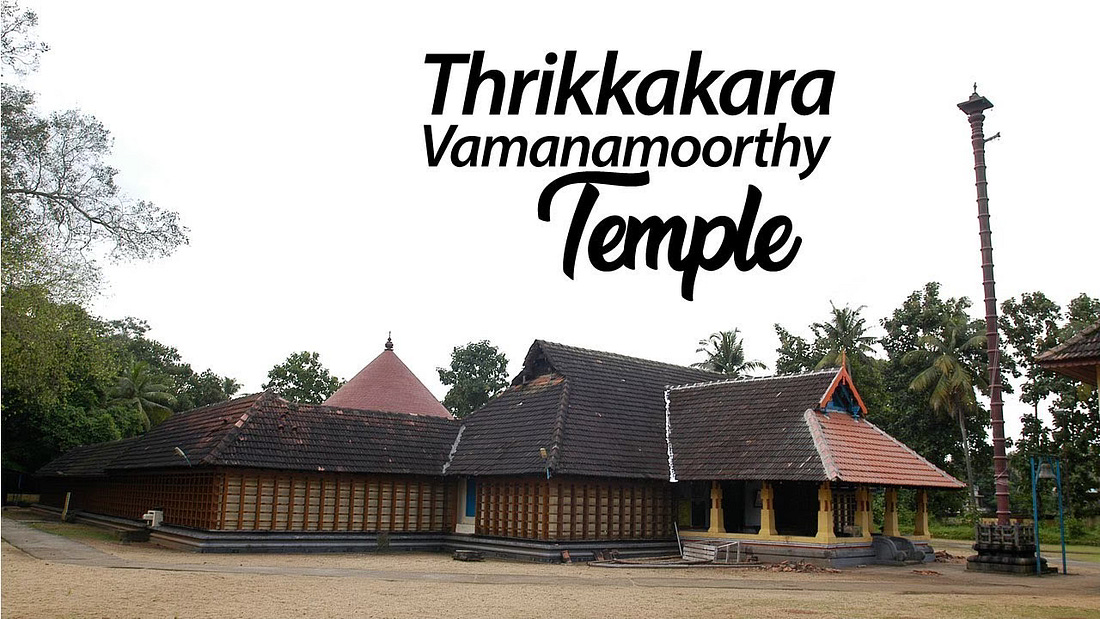Onam – Breaking Through the Many Layers of Stories. An attempt to pierce through the shroud of mist that surrounds Kerala’s well-known festival. In recent years, Onam, the official festival of Kerala has attracted a lot of attention and there are so many views and counterviews that come up for discussion each year. This is a very good development as it forces people to research further into this festival. And each year brings new insights and learnings. This churn is for the good in order that indigenous festivals don’t go the way of the festivals of the pagan religions. Easter is now known only as a Christian festival since its origins as a pagan festival have been erased. A friend Binu Padmam put up a Youtube video on Onam in Malayalam and listening to it made me decide that I need to pen down some thoughts and new insights that I got from it in English for our audience. Hindu Parenting had done a podcast on Onam in 2024 and here is the link to it. I shall attempt to put down my thoughts in Q and A format and these answers are sourced from Binu Padmam’s video whose link will be provided at the end. I also did some further Q and A with him after listening to his video to clarify some further doubts. Those will also be addressed. When are the first references to Onam found in Malayalam literature? Or what are the origins of this festival? Literary references to Onam are not too many according to Binu. Paanan paattu or pulluvan paattu on Onam are the references we have about this festival. What are these then? These are songs on Onam sung by Paananmmaar in northern to central Kerala and Pulluvanmmaar in southern Kerala. This was a community of wandering bards or minstrels somewhat like the Bauls of Bengal. If we were to delve further, according to GOI classification, this community falls under the scheduled castes category. Given the stigma and social ostracism associated with this category of people in our country, it is immensely interesting to note that it is this community or jati that was entrusted with the task of spreading the charithram or the stories / histories / praises of deities and kings throughout the land of Kerala in song form! This was their only means of livelihood. So, a person of scheduled caste treated as so called low caste was entrusted with a very lofty task of singing praises and narrating stories of deities and kings! Early references to Onam can be found in their songs. It is not to say that references to Onam are found only in their songs. There are some documents referring to Onam but none are authoritative or extensive says Binu. It is to be noted that I could not find a single paanan paattu on Onam when I searched for them on YouTube. This means that this tradition has mostly been erased. It may be surviving in pockets but as a tradition, it seems to have vanished with the paanans progressing in life with modern education and opportunities. Effectively, we can say that the tradition has been lost and what remains is mostly performed as an exotic art form; a sort of museumization of a part of culture which denotes its death. Binu shared with me the insights of one of his friends from the community. The person underlined the point that no one in his community knows any of those traditional songs anymore. In fact, some of them have progressed to learning classical music and so on but most are engaged in singing folk songs and songs in movies many a times even without formal training. Singing without formal training means that something that they had been doing for generations has left a genetic imprint in them to be able to do so effortlessly. Onam related paanan songs interestingly have absolutely no reference to King Mahabali who has become practically the logo and emblem of Onam along with the flower rangoli! The Onam related paanan songs have references to Mahadev and Mahavishnu but none at all to Mahabali. One of the songs goes as follows:
The above lines translate as
It is interesting to note that the song talks about the Thrikkakara temple whose deity is now the Vamana murthy avatar of Mahavishnu and refers to him as Mahadeva. So, was Thrikkakara a Shiva Kshetram before and when and why did it become a Vishnu Kshetram? The Thrikkakara temple is the nodal point for the Onam festival even today and one wonders whether a festival initially revolving around Shiva came to be associated with Vishnu when for whatever reasons, the murthy of Thrikkakara temple changed. It gives us food for thought. How did Mahabali come to be associated with this festival? This question is a tricky one to answer. As I stated before, King Mahabali has almost become the logo of Onam. He is represented as a pot bellied, portly king walking gaily with a wooden umbrella, almost like a Keralite version of Santa Claus! As a mere personal conjecture, it might be possible that when the story around Onam moved from Mahadev to Mahavishnu, the story of Vamana and Mahabali started to be associated with Onam. However, there are inherent contradictions in this. Vamana is the 5th avatar of Vishnu and Parashurama, the 6th. Parashurama is said to have carved out the Konkan area including present day Kerala from the sea in his avatara rupa. If that is the case, then how can Mahabali who was in the story related to the avatar before Parashurama ever have set foot in Kerala? Kerala didn’t exist then according to the Dashavatara story. Having adopted the Vamana and Mahabali story with its initial contradictions, it has further been mangled in recent history, perhaps since the start of the 20th century. The popular version goes that Mahavishnu in his dwarf avatara asked his most ardent devotee Mahabali for land that he could claim in three steps and in claiming those, he grew to such a size that with his first step he conquered the heavens, with the second he conquered the earth and when he asked where he would place his third foot, Mahabali replied that he should place his third step on Mahabali’s head. Till this point, the story stays true to its original interpretation in the puranas, mainly the Bhagavata purana. Incidentally, these puranas are also not part of Kerala’s literary past, having been written in the northern parts of Bharata. It is said in the Bhagavata purana that Vamana blessed his devotee for his pious devotion and sent Mahabali to sutala loka (which is not paatala loka as is said today and which is not also corresponding to hell as translation. Indian puranas talk about 14 lokas of which sutala loka is one of the subterranean lokas) as its king, saying that he (Mahavishnu) would stand as the dwarapalaka or the guard of the kingdom. He also blessed Mahabali saying that in the next epoch or manvantara, Mahabali would be the king of gods or Indradeva. All these events are said to have happened in the environs of the Narmada river in modern day Madhya Pradesh. But by some miraculous time-space journey, the story seems to have been transplanted into Kerala. However, in the modern telling of this story in Kerala, Mahabali is pushed into paatala loka or hell (bad translation) by Vamana as a punishment. The tone is one of punishment to Mahabali and the lens of oppressor-oppressed, a favourite Marxist trope is applied to this story. Thus, a story which arrived with contradictions in the distant past because of the switch of deities from Mahadeva to Mahavishnu, got knotted further with these erroneous misinterpretations of the Vamana-Mahabali katha. Why is Onam celebrated for 10 days? In the Bhagavata purana it is said that the Thiruvonam day in the Malayalam month of Chingam is the birthday of Vamana or Vamana Jayanthi. The Thrikkakara temple has its annual temple festival in the Malayalam month of Chingam and it runs for 10 days from Attham to Thiruvonam. Since the Vamana-Mahabali story has been adopted as being the one defining Onam, and since Thrikkakara deity is the ruling deity of Onam, the festivities for Onam coincide with the temple festival dates. Here is a short video on the Thrikkakara temple festival. What are the rituals associated with the festival? The floral rangoli of Onam is another signature element that is associated with the festival. One of the stories around this is as follows. There was a feud between the Kochi king and the Samudiri king who ruled the Malabar region whereby the Samudiri’s people could not go to pay their respects to Thrikkakaraappan (Vamana murthy). Troubled by this, the Samudiri king ordered his subjects to decorate their own homes and place representations of the deity and worship him from their homes itself when Attham day dawned. Thus, started the practice of worshipping the deity in individual homes placing clay towering pyramids in the centre of the floral rangolis during the 10 day Onam festival. In the Valluvanadan parts of Kerala comprising of Perinthalmanna, Mannarkkad, Ottapalam and so on, these clay pyramids are called Mathevars which I believe is the corruption of the word Mahadeva. This signals that it was a festival initially dedicated to Mahadev. In other parts of Kerala, these pyramids are called Thrikkakarappans which in present times denotes the Vamana or Vishnu deity at Thrikkakara. In any case, these clay pyramids were an intrinsic and essential part of the festivities. They were worshipped specially on these days and food offerings were made to them just as one would make naivedya to the gods. At the end of the 10-day festivities, these clay pyramids were dissolved in water much like it is done with Ganpati murtis after the Ganesh festival which incidentally also runs for 10 days and in fact occurs very close to the Onam dates. The reason for making these clay murtis and then dissolving them is that they are a temporary representation of the deity. Hindus believe that there is Chaitanya or consciousness in the murtis even if they are temporary. But as long as they are the manifestations of the deity, they have to be worshipped in the proper paddhati and that is why they are given naivedya every day. The dissolution is done because individual households are not in a position to worship the deity in all the ways they are supposed to be, every day of the year. But the practice of placing these deity representations within floral rangolis has all but vanished today because the festival has become secularized and de-hinduized. Today we see beautiful and elaborate floral rangolis empty of the mathevars or thrikkakarappans in the centre. The state of Kerala declared Onam to the state festival in 1961 and since then, an already knotted festival has progressively been stripped of its Hindu roots to make it palatable to the other minorities of Kerala who also want to celebrate this festival because of its vibrancy and colour. Thus, removing the mathevars is akin to removing idolatory which is anathema to the Abrahamic faiths. That step made the festival more palatable to Christians and Muslims alike and since then, the gradual stripping off of every connection of Onam to Hinduism has rapidly gained ground. As Binu has said in his video, “A flower rangoli without the thrikkakarappan is akin to a sanctum sanctorum without the vigraha”. Binu says that the flower rangoli has even been compared to the Sri Chakra in old paanan paattukal or songs of the paanans, signifying worship of the feminine too formed an aspect of Onam. Why is Onam called as a harvest festival? Another distortion of narrative has happened with the christening of Onam as a desacralized, de-hinduized harvest festival. Today, Onam is also called a harvest festival and this year, X was flooded with people questioning what crop was being harvested in Kerala on the back of a wet and non-productive monsoon period. As we all know, Kerala has one of the wettest monsoon periods when every activity practically comes to a standstill. Thus, how can there be a harvest festival so soon after a heavy monsoon. Binu says that he doesn’t know how the tag of harvest festival came to be attached to Onam. There is no reference to this aspect historically but this perhaps began to get attached to Onam when the secularization of the festival began, to make it accessible to non-Hindus. It is true that one rice harvest is done in the Chingam month when Onam falls. This perhaps explains the grand feast or the Onasadya that is another signature feature of Onam. In older times, this was the only time when rice was available to the common populace and at other times, people lived on whatever was available locally during he season. According to Binu, most households never had a staple grain as their base food. It was just produce that was locally available that was cooked. So, during the summer months it would be mango and jackfruit, at other times, it would be yams and tapioca, at others, just things made from different parts of the banana tree. Hence, rice as a grain used to be available only during this Onam festival time and thus it became a reason to celebrate with rice and a plethora of dishes, the occasion of Vishnu’s birth as the Vamana avatara. We are yet to uncover the reason for the celebration if it was a Shiva festival to start with as is evidenced from the songs of the paanans. That is exploration for another day. This has been a very long post but it has been worth the while because every churn regarding this subject will just help unentangle the numerous knots surrounding this festival and prevent it from getting digested and assimilated into some secular melting pot of cultures. As Binu says at the end of his video, Onam was a deeply local festival with multiple ways of celebration. We do not want to stop anyone from celebrating the festival but to strip it of its Hindu identity to suit a predatory agenda is something we must resist. When you don’t nourish the roots of any culture, it just atrophies and dies. And then harvesting more fruits from such a culture will not be possible. Bharat’s strength is Hinduism and her unarguable diversity. Destroying the roots of Hinduism will leave the world a poorer place because when the roots die, the plant ceases to exist. As cultures have borrowed from Hinduism over millennia, if we allow the roots to also survive and thrive, the potential for more diverse fruits being obtained from it also lives. Finally, since my thoughts have been triggered primarily by Binu Padmam’s video and my extended conversations with him, I thank him immensely for his beautiful video. Linking it below.  Another thread on X on the subject of Onam with a lot of overlaps with this writeup is also very useful to read. Read the thread here. Note: The above post is written by Shalini Puthiyedam May we all thrive and prosper. Let Mahavishnu/Mahadeva/Devi grant us all health and wealth and the ability to create and expand in diversity. Wish everyone a very Happy Onam! -Hindu Parenting (www.hinduparenting.org)
You're currently a free subscriber to Hindu Parenting. For the full experience, upgrade your subscription. |
Onam - Breaking through Many Layers of Stories
21:10
0






